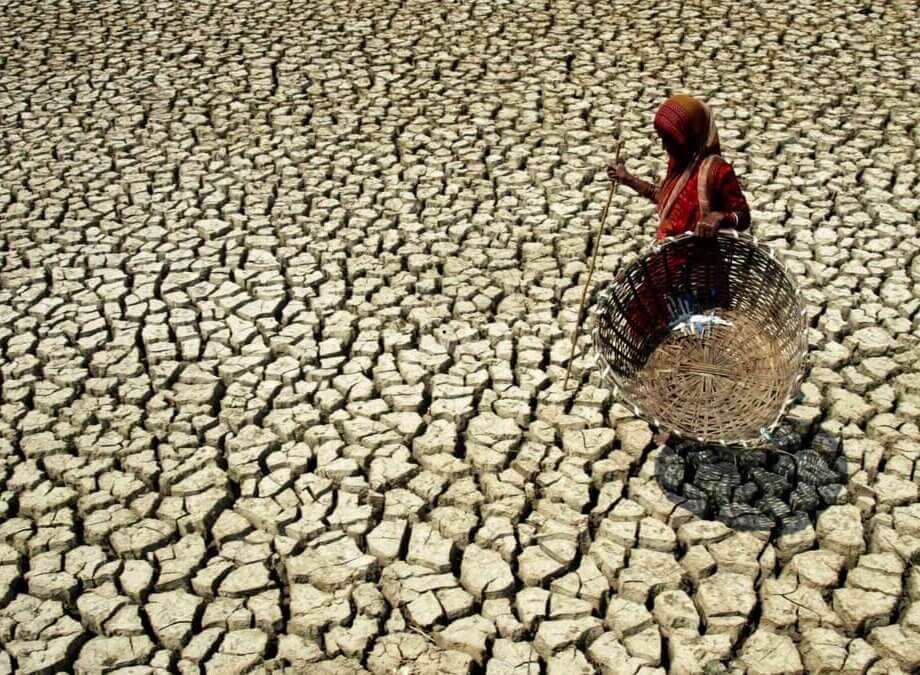Asia’s Climate Emergency: Warming at Twice the Global Rate
Asia, home to more than half the world’s population, is now at the epicenter of the global climate crisis. According to the latest State of the Climate in Asia 2024 report by the World Meteorological Organization (WMO), the continent is heating up nearly twice as fast as the rest of the world. This rapid warming is intensifying extreme weather events, threatening food security, destabilizing fragile ecosystems, and inflicting billions of dollars in economic losses. The consequences are already being felt across the region, from the Himalayas to the Pacific Islands.
- Asia’s Climate Emergency: Warming at Twice the Global Rate
- Why Is Asia Warming So Fast?
- Record-Breaking Heatwaves and Extreme Weather
- Floods, Droughts, and Cyclones: A Region Under Siege
- Melting Glaciers and Rising Seas: The Cryosphere in Crisis
- Coastal Communities and Pacific Islands: On the Frontlines of Sea Level Rise
- Economic and Social Impacts: Billions in Losses, Millions at Risk
- Health Impacts: A Growing Threat to Human Well-Being
- Adaptation and Early Warning: Building Resilience in a Changing Climate
- The Global Context: Greenhouse Gases and the Paris Agreement
- What Can Be Done? Pathways to a Safer Future
- In Summary
In 2024, Asia experienced its hottest or second-hottest year on record, with average temperatures rising 1.04°C (1.87°F) above the 1991–2020 baseline. This warming trend, observed between 1991 and 2024, is nearly double that of the previous three decades (1961–1990). The continent’s vast landmass, which heats more quickly than the world’s oceans, is a key factor behind this accelerated warming. As a result, Asia is acutely vulnerable to the impacts of climate change, with far-reaching implications for its people, economies, and natural systems.
Why Is Asia Warming So Fast?
Asia’s unique geography plays a significant role in its rapid warming. The continent stretches from the equator to the Arctic, encompassing a vast land area that absorbs and retains heat more efficiently than oceans. Land surfaces generally warm faster than water because they have a lower heat capacity and do not distribute heat as evenly. This means that as global temperatures rise, continents like Asia experience more pronounced increases.
Additionally, Asia’s proximity to rapidly warming oceans—particularly the Indian and Pacific Oceans—exacerbates the situation. The WMO report highlights that Asia’s sea surface temperatures have been increasing at a rate of 0.24°C per decade, nearly double the global mean of 0.13°C. This oceanic warming not only raises sea levels but also fuels more intense and frequent marine heatwaves, which have devastating effects on marine ecosystems and coastal communities.
Record-Breaking Heatwaves and Extreme Weather
In 2024, prolonged and severe heatwaves swept across much of Asia. East Asia, including Japan, South Korea, and China, experienced record-breaking monthly average temperatures from April to November. Japan, for instance, had its warmest year on record, surpassing the previous high set just a year earlier. Myanmar set a new national temperature record of 48.2°C (118.7°F) in April, while parts of India saw temperatures soar above 44°C (111°F), leading to hundreds of heat-related deaths.
These heatwaves are not isolated incidents. They are part of a broader pattern of increasingly frequent and intense extreme weather events driven by climate change. The WMO report notes that heatwaves are now the deadliest type of extreme weather globally, responsible for nearly half a million deaths each year. In Asia, the toll is rising as vulnerable populations struggle to cope with the physiological and infrastructural challenges posed by extreme heat.
Floods, Droughts, and Cyclones: A Region Under Siege
Asia’s climate crisis is not limited to heatwaves. The continent is also experiencing more frequent and severe floods, droughts, and tropical cyclones. In 2024, Tropical Cyclone Yagi tore through Vietnam, the Philippines, Laos, Thailand, Myanmar, and China, leaving widespread destruction in its wake. The death toll from this event alone surpassed 1,000, with hundreds of thousands of buildings destroyed.
Heavy rainfall and landslides have caused significant casualties and economic losses. In July 2024, Kerala in southern India was hit by extreme rainfall, resulting in over 350 deaths. Nepal experienced record-breaking rains in September, leading to severe floods that killed at least 246 people and caused damages exceeding US$94 million. Meanwhile, drought in China affected nearly 4.8 million people, decimated crops across more than 335,000 hectares, and led to direct economic losses of over US$400 million.
These events highlight the dual threat of too much and too little water—a hallmark of climate change. While some regions are inundated by floods, others suffer from prolonged droughts, both of which undermine food security, disrupt livelihoods, and strain emergency response systems.
Melting Glaciers and Rising Seas: The Cryosphere in Crisis
Asia’s high mountain regions, often referred to as the “Third Pole,” contain the largest volume of ice outside the polar regions. Glaciers in the Himalayas and Tian Shan are retreating at an alarming rate due to reduced winter snowfall and extreme summer heat. Of the 24 monitored glaciers in the region, 23 lost mass in 2023–2024, raising the risk of glacial lake outburst floods and catastrophic downstream flooding.
This glacial melt has profound implications for water security. Hundreds of millions of people in Asia depend on glacier-fed rivers for drinking water, agriculture, and hydropower. As glaciers shrink, the long-term availability of these water resources is threatened, increasing the risk of conflict and displacement.
At the same time, sea levels on Asia’s Pacific and Indian Ocean coasts are rising faster than the global average. In 2024, nearly 15 million square kilometers of Asian ocean—about one-tenth of the world’s ocean surface—were affected by marine heatwaves of strong, severe, or extreme intensity. This unprecedented warming is pushing sea levels higher, altering ocean currents, and disrupting marine ecosystems.
Coastal Communities and Pacific Islands: On the Frontlines of Sea Level Rise
Rising sea levels pose an existential threat to Asia’s low-lying coastal communities and island nations. Countries like Bangladesh, China, India, and the Pacific Islands are particularly vulnerable, with nearly 900 million people living in areas at acute risk from rising seas. The World Economic Forum’s Global Risks Report 2025 identifies sea level rise as one of the top threats to the world in the coming decade.
Pacific Island nations such as Tuvalu, Kiribati, and Fiji have already experienced dramatic increases in coastal flooding, shoreline retreat, and saltwater intrusion into freshwater supplies. In some cases, entire villages have been relocated to safer ground. The average elevation of these islands is just one to two meters above sea level, making them especially susceptible to even small increases in sea level.
According to the WMO, sea levels in parts of the western tropical Pacific have risen by 10–15 centimeters since 1993, nearly twice the global average. This trend is expected to continue, with projections of an additional 15 centimeters of sea level rise in the next three decades—even if greenhouse gas emissions are brought under control.
Economic and Social Impacts: Billions in Losses, Millions at Risk
The economic and social costs of Asia’s climate crisis are staggering. Extreme weather events have inflicted billions of dollars in damages, destroyed infrastructure, and disrupted economic activities across the region. Agriculture, a cornerstone of many Asian economies, is particularly vulnerable to heatwaves, droughts, and floods, threatening food security for hundreds of millions.
According to the WMO, Asia remained the world’s most disaster-hit region from weather, climate, and water-related hazards in 2023. Floods and storms caused the highest number of reported casualties and economic losses, while the impact of heatwaves became more severe. In 2023 alone, over 2,000 fatalities and nine million people were directly affected by 79 reported disasters in Asia.
Food insecurity is on the rise, with climate shocks undermining agricultural productivity and increasing the risk of hunger. The World Food Programme reports that 770 million people faced hunger in 2020, predominantly in Africa and Asia. Climate change exacerbates these challenges by disrupting food systems, reducing crop yields, and increasing the frequency of foodborne diseases.
Health Impacts: A Growing Threat to Human Well-Being
Climate change is not just an environmental or economic issue—it is a fundamental threat to human health. The World Health Organization (WHO) warns that climate change is expected to cause approximately 250,000 additional deaths per year between 2030 and 2050, from undernutrition, malaria, diarrhea, and heat stress alone. Areas with weak health infrastructure, mostly in developing countries, are the least able to cope without assistance.
Extreme heat compromises the body’s ability to regulate temperature, increasing the risk of heatstroke and other heat-related illnesses. Vulnerable populations, including the elderly, children, and those with pre-existing health conditions, are at greatest risk. Heatwaves have already led to a 70% increase in heat-related deaths among those over 65 in the past two decades.
Floods and storms can lead to outbreaks of waterborne and vector-borne diseases, while droughts exacerbate food and water insecurity. Mental health is also affected, with climate-induced displacement and disasters contributing to anxiety, depression, and post-traumatic stress.
Adaptation and Early Warning: Building Resilience in a Changing Climate
As the impacts of climate change intensify, adaptation and resilience-building are becoming increasingly urgent. The WMO report highlights the importance of early warning systems and anticipatory action in saving lives and livelihoods. For example, Nepal’s investment in flood early warning systems enabled communities to prepare for evacuation and reduced casualties during the record-breaking floods of September 2024.
However, significant gaps remain. While 80% of WMO members in Asia provide climate services to support disaster risk reduction, less than half offer tailored products needed for effective risk management and adaptation. Expanding access to early warning systems, improving infrastructure, and investing in climate-resilient agriculture and health systems are critical steps toward safeguarding vulnerable populations.
The Global Context: Greenhouse Gases and the Paris Agreement
Asia’s climate crisis is part of a broader global trend. In 2023, the world’s three principal greenhouse gases—carbon dioxide, methane, and nitrous oxide—reached unprecedented highs. The global average near-surface temperature was 1.45°C above the pre-industrial baseline, making 2023 the warmest year on record. The world is now dangerously close to breaching the 1.5°C warming threshold set by the Paris Agreement, with scientists warning that every fraction of a degree beyond this limit increases the risks of catastrophic impacts.
Joeri Rogelj, a climate scientist at the Grantham Institute, emphasizes the urgency of rapid emissions reductions:
“1.5 degrees of warming is just around the corner and it will take a Herculean effort to avoid it. This is deeply concerning, but crossing it makes the target more important because every fraction of warming—whether it is 1.6, 2 or 3 degrees—creates a more dangerous world and the longer we stay above 1.5 degrees, the higher the losses and damages for people will be.”
Exceeding 1.5°C of warming greatly amplifies climate risks, including perilous sea level rise, the collapse of coral reefs, and the melting of ice sheets. The cost of inaction is immense, with estimates suggesting that the total cost of unchecked climate change could reach trillions of dollars by the end of the century.
What Can Be Done? Pathways to a Safer Future
Addressing Asia’s climate crisis requires a multi-faceted approach:
- Mitigation: Rapidly reducing greenhouse gas emissions through a transition to renewable energy, improved energy efficiency, and sustainable land use.
- Adaptation: Investing in climate-resilient infrastructure, early warning systems, and disaster preparedness to reduce vulnerability to extreme weather events.
- Health Systems: Strengthening health infrastructure to cope with climate-related health risks, including heatwaves, vector-borne diseases, and food insecurity.
- International Cooperation: Supporting vulnerable countries and communities through climate finance, technology transfer, and capacity building.
- Community Engagement: Empowering local communities to participate in adaptation planning and decision-making, ensuring that solutions are context-specific and inclusive.
Innovative adaptation strategies are already being implemented across Asia. For example, South Korea and the Maldives are experimenting with floating homes, while China and India are developing systems to absorb and store stormwater for reuse. In Fiji, entire villages have been relocated to safer ground in response to rising sea levels.
In Summary
- Asia is warming nearly twice as fast as the global average, with 2024 marking one of the hottest years on record for the continent.
- Extreme weather events—including heatwaves, floods, droughts, and cyclones—are becoming more frequent and severe, causing significant human and economic losses.
- Glaciers in the Himalayas and Tian Shan are retreating rapidly, threatening water security for millions.
- Sea levels on Asia’s coasts are rising faster than the global average, putting coastal communities and Pacific Islands at acute risk.
- The economic, social, and health impacts of climate change are profound, with food insecurity, disease, and displacement on the rise.
- Adaptation and resilience-building, including early warning systems and climate-resilient infrastructure, are essential to safeguard lives and livelihoods.
- Urgent action to reduce greenhouse gas emissions and support vulnerable communities is critical to avoid the most catastrophic impacts of climate change.




